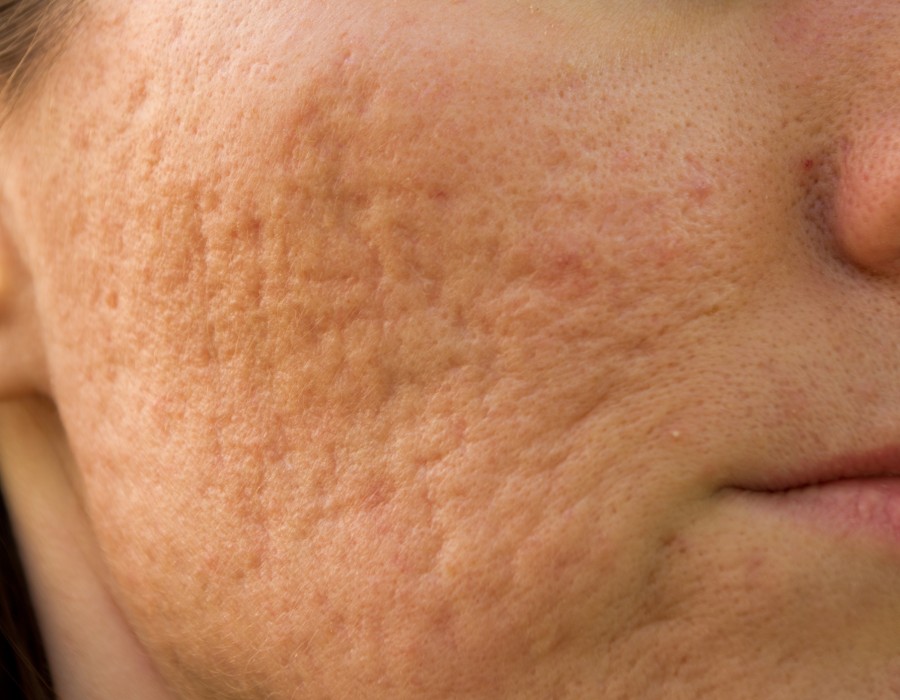Acne is a common skin condition that affects millions worldwide, leaving many individuals searching for effective treatments. Among the various options available, laser therapy has emerged as a popular choice for managing acne. But can laser therapy truly reduce acne? This question has sparked widespread interest, as lasers promise precision and targeted treatment for even the most stubborn breakouts. This article delves into the mechanisms, types, and effectiveness of laser therapy in combating acne. Let’s delve into Laser Acne Treatment in Dubai.
Understanding Acne and Its Causes
Acne occurs when hair follicles become clogged with oil, dead skin cells, and bacteria. Factors like hormonal changes, stress, diet, and genetics often contribute to its onset. Acne can manifest as blackheads, whiteheads, pimples, or severe cystic lesions. While topical creams and oral medications are standard treatments, they may not work for everyone, particularly for persistent or severe cases.

How Does Laser Therapy Work?
Laser therapy targets acne at its root by using specific wavelengths of light to treat the skin. It works in several ways:
- Eliminating Bacteria: Certain lasers produce blue light that penetrates the skin's surface to kill Propionibacterium acnes bacteria, a primary contributor to acne.
- Reducing Sebum Production: Lasers can shrink sebaceous glands, leading to decreased oil production, which is a common trigger for clogged pores.
- Promoting Skin Healing: By stimulating collagen production, laser therapy helps repair damaged skin and reduce the appearance of acne scars.
- Targeting Inflammation: Laser energy can reduce redness and swelling associated with inflamed acne lesions.
Types of Laser Therapy for Acne
Several types of laser therapies are commonly used to treat acne, each tailored to different skin conditions and needs:
1. Blue Light Therapy
This therapy utilizes blue wavelengths to specifically target acne-causing bacteria. It is non-invasive and often recommended for mild to moderate acne.
2. Fractional Lasers
Fractional lasers, such as fractional CO2 or erbium lasers, create micro-injuries in the skin to stimulate collagen production. They are effective for reducing acne scars and improving skin texture.
3. Pulsed Dye Lasers (PDL)
PDL treatments are designed to reduce redness and inflammation in acne lesions. They work well for individuals with persistent redness or rosacea-like acne.
4. Nd:YAG Lasers
These high-intensity lasers penetrate deeper into the skin, targeting both active acne and scars. They are especially effective for treating cystic or nodular acne.
5. IPL (Intense Pulsed Light)
Although not technically a laser, IPL uses a broad spectrum of light to target acne and hyperpigmentation. It is versatile and can be customized for individual skin concerns.
The Procedure: What to Expect
Laser therapy for acne typically involves the following steps:
- Consultation: A dermatologist evaluates your skin type and the severity of your acne to determine the most suitable laser treatment.
- Preparation: The treated area is cleansed, and protective eyewear is provided to shield your eyes from laser light.
- Treatment: The dermatologist uses a handheld device to deliver laser pulses to the affected areas.
- Post-Treatment Care: After the session, a soothing gel or sunscreen is applied to minimize irritation and protect the skin.
Each session lasts between 20 to 60 minutes, depending on the treatment area and severity of acne.
Effectiveness of Laser Therapy
Laser therapy has shown promising results for many individuals struggling with acne. Clinical studies indicate that laser treatments can significantly reduce active acne lesions and improve skin texture. However, results vary depending on factors such as skin type, acne severity, and adherence to post-treatment care.
It is essential to note that laser therapy may not be a one-time solution. Multiple sessions are often required to achieve optimal results, and maintenance treatments may be necessary to prevent recurrence.
Potential Side Effects
Like any medical procedure, laser therapy carries some potential risks and side effects. These may include:
- Temporary Redness: The treated area may appear red or swollen for a few hours to days.
- Skin Sensitivity: Increased sensitivity to sunlight is common after laser treatments.
- Mild Discomfort: Some individuals report a tingling or warm sensation during the procedure.
- Hyperpigmentation or Hypopigmentation: Changes in skin color can occur, particularly in individuals with darker skin tones.
Most side effects are temporary and subside with proper post-treatment care.
Who Is a Suitable Candidate?
Laser therapy is generally suitable for individuals with:
- Persistent or moderate-to-severe acne that hasn’t responded to traditional treatments.
- Acne scars that affect their confidence or quality of life.
- No active skin infections or severe underlying health conditions.
It is crucial to consult with a qualified dermatologist to determine whether laser therapy is the right option for you.
Conclusion
Laser therapy has revolutionized the treatment landscape for acne, offering a targeted and minimally invasive solution. By addressing underlying causes such as bacteria, excess oil production, and inflammation, laser treatments can reduce acne and improve skin clarity. However, individual results depend on various factors, including the severity of acne and the type of laser used. A consultation with a dermatologist is essential to tailor the treatment to your specific needs and achieve the best possible outcome.





Comments